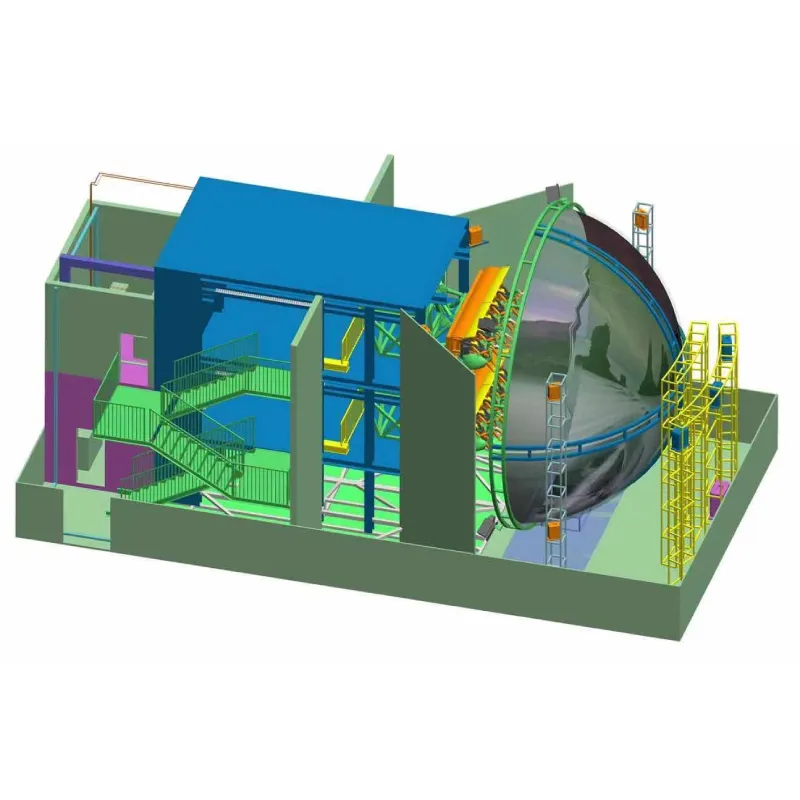- Albanian
- Arabic
- Belarusian
- Bengali
- Czech
- English
- French
- German
- Hebrew
- Hungarian
- Indonesian
- irish
- Italian
- Japanese
- kazakh
- Persian
- Russian
- Thai
- Uzbek
- Vietnamese
Exciting Roller Coaster Adventures That Will Get Your Heart Racing
The Thrilling World of Roller Coasters
Roller coasters are more than just amusement park rides; they are a celebration of engineering, physics, and the sheer joy of adrenaline. Over the years, these magnificent structures have evolved from simple wooden tracks to intricate steel designs that twist and turn at breathtaking speeds. The roller coaster experience is a thrilling blend of anticipation, excitement, and sometimes even fear, which makes it a quintessential part of any amusement park visit.
The Evolution of Roller Coasters
The origins of roller coasters can be traced back to 17th century Russia, where sled-like rides known as Russian Mountains were constructed to slide down wooden hills. These early versions were quite basic, lacking the loops and high speeds we associate with modern coasters. However, as technology advanced, so did the design of roller coasters. The first true roller coaster as we know it today debuted in the 19th century in Paris, featuring a track made of wood and a simple cart that was propelled down the hill by gravity.
The advent of steel tracks in the 1970s revolutionized roller coaster design. Steel coasters allowed for smoother rides and more elaborate layouts, including inversions, corkscrews, and zero-gravity rolls. The introduction of computer-aided design in the late 20th century further pushed the boundaries of what was possible. Now, designers can create complex attractions that offer unexpected drops, tight turns, and unique theming that enhances the overall experience.
The Physics of Thrills
Riding a roller coaster involves some fascinating principles of physics. As the train ascends, it converts the energy from the lift into potential energy. At the highest point, this potential energy is at its maximum. When the coaster descends, potential energy transforms into kinetic energy, causing the train to pick up speed rapidly. This interplay of energies results in the roller coaster's exhilarating drops and rapid accelerations.
Moreover, the forces experienced during a ride—such as g-forces—play a crucial role in the thrill factor. When a coaster takes a sharp turn or a sudden drop, riders experience changes in acceleration that can feel like a weightless sensation or a heavy push against the seat. These g-forces can amplify the excitement and fear that come with roller coasters, heightening the overall experience.
roller coasters video

The Experience of Riding a Roller Coaster
Riding a roller coaster is a unique emotional journey. The experience often begins long before the actual ride, as guests line up, their anticipation mounting with every passing minute. The sight and sound of the coaster—trains clicking as they ascend the lift hill, the screams of exhilaration from riders—add to the excitement. As riders strap themselves in, a mix of nerves and anticipation fills the air.
Once the ride begins, emotions take center stage. The slow ascent often creates a sense of dread as the riders can see the heights they are about to reach. However, the inevitable drop transforms that dread into exhilaration as the train plummets downward, leaving everything else behind. Loops and turns add layers of complexity, combining disorienting thrills with moments of breathtaking views.
The Cultural Impact of Roller Coasters
Roller coasters have become iconic symbols of fun and adventure, representing the joy of childhood and the thrill of facing one's fears. They attract millions of visitors to amusement parks each year, contributing significantly to the entertainment industry. Furthermore, roller coasters often serve as cultural landmarks. Parks like Disneyland and Six Flags are known for their signature rides, which become part of popular culture through movies, merchandise, and social media.
The rise of YouTube has also propelled the reputation of roller coasters to new heights. Enthusiasts post videos of their rides, showcasing thrilling angles and reactions that often go viral. These videos inspire new visitors to parks and encourage coaster manufacturers to innovate further, pushing the boundaries of what can be achieved in the realm of amusement rides.
Conclusion
In summary, roller coasters are much more than just rides; they are intricate structures that harness the laws of physics to create experiences filled with joy, fear, and excitement. From their humble beginnings to their current state-of-the-art designs, roller coasters continue to captivate the hearts of thrill-seekers around the globe. Whether you’re a seasoned enthusiast or a first-time rider, the allure of the roller coaster is undeniable—a testament to our love for adventure and the thrill of life itself.
-
Flume Ride-Hebei Zhipao Amusement Equipment Manufacturing Co., Ltd.|Thrilling Water Attraction&Customizable DesignJul.30,2025
-
Flume Ride - Hebei Zhipao Amusement Equipment | Water Coaster, Thrilling DescentJul.30,2025
-
Flume Ride - Hebei Zhipao | Thrilling Water AttractionJul.30,2025
-
Flume Ride: Thrilling Water Attraction by Hebei Zhipao|Log Flume Manufacturers&Flume Ride DesignJul.30,2025
-
Flume Ride-Hebei Zhipao Amusement Equipment Manufacturing Co., Ltd.|Thrilling Water Coaster, Safe DesignJul.30,2025
-
Flume Ride-Hebei Zhipao Amusement Equipment Manufacturing Co., Ltd.|Thrilling Water Attraction, Safe DesignJul.30,2025
